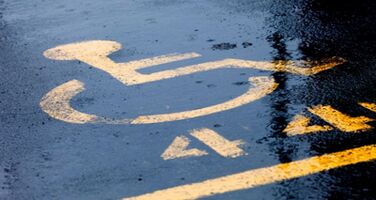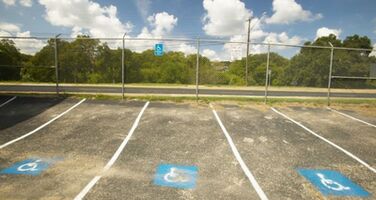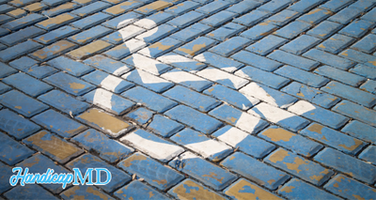
Myths vs. Facts: Debunking Common Misconceptions about Handicap Placards in New York
Introduction
Handicap placards play a vital role in ensuring accessibility and convenience for individuals with disabilities in New York. However, there are several myths and misconceptions surrounding these placards that can lead to confusion and misunderstanding. In this comprehensive article, we will debunk common misconceptions about handicap placards in New York, separating myths from facts. By the end, you will have a clear understanding of the regulations, benefits, and proper usage of disability signs in the state.
Myth: Handicap placards are only for individuals in wheelchairs
Contrary to popular belief, disability signs are not exclusively reserved for individuals who use wheelchairs. The eligibility criteria in New York extend beyond wheelchair users. Individuals with various disabilities, including mobility impairments, respiratory conditions, visual impairments, and chronic illnesses that affect their ability to walk or exert themselves, may qualify for a handicap permit.
Fact: Disability passes are available to individuals with a range of disabilities, not limited to those using wheelchairs. The criteria encompass various impairments affecting mobility, respiratory function, vision, and chronic illnesses.
Myth: Handicap placards can be used by anyone for parking convenience
One common misconception is that anyone can use a handicap pass to gain access to reserved parking spaces, even if they do not have a disability. This is entirely false and constitutes an abuse of the system. Disability signs are strictly reserved for individuals with disabilities who meet the eligibility requirements outlined by the New York Department of Motor Vehicles (DMV).
Fact: They are exclusively for individuals with disabilities who meet the eligibility criteria set by the New York DMV. Unauthorized use is both unethical and illegal.
Myth: Handicap placards are permanent and never expire
Some individuals believe that once they receive a disability permit, it is valid for a lifetime and does not require renewal. This is a myth that can lead to misuse and abuse of designated parking spaces. In reality, passes in NY have an expiration date and must be renewed periodically.
Fact: Permits have an expiration date and require renewal. The renewal period varies depending on the type of permit issued, ranging from permanent permits that require renewal every five years to temporary ones that may have shorter durations.
Myth: Handicap placards grant unlimited parking privileges
There is a common misconception that possessing a handicap placard allows individuals to park anywhere, anytime, without any restrictions. This is far from the truth. While these provide parking benefits, they do not grant unlimited parking privileges. It is important to adhere to the parking regulations and signage in place.
Fact: Handicap passes grant parking benefits, but individuals must still comply with parking regulations. They must park in designated parking spaces and adhere to any time limits specified.
Myth: Handicap placards are easily obtainable without proper documentation
Some people believe that obtaining a pass is a simple process that does not require substantial documentation. However, the reality is that disability passes in New York require proper documentation, including medical certification and approval from a qualified healthcare professional.
Fact: Obtaining a pass in NY involves submitting appropriate documentation, such as medical certification, to demonstrate eligibility. The DMV carefully reviews the documentation to ensure compliance with the regulations.
Myth: Handicap placards are unnecessary if you have a disabled license plate
Another misconception is that having a disabled license plate eliminates the need for a disability sign. While a disabled license plate indicates that the vehicle is registered to an individual with a disability, it does not grant parking benefits on its own. To take advantage of reserved parking spaces, a disability sign is still required.
Fact: A disabled license plate indicates the vehicle owner has a disability but does not provide parking benefits by itself. A valid pass must be displayed alongside the disabled license plate to utilize reserved parking spaces.
FAQs about Handicap Placards in New York
FAQ 1: How can I apply for a disability pass in NY?
To apply for a New York handicap placard, you need to complete the Application for Parking Permit or License Plates, available on the NY DMV website. You must provide the necessary documentation, including medical certification, and submit the application to the DMV either by mail or in person.
FAQ 2: Can I use my out-of-state disability pass in NY?
Yes, NY recognizes out-of-state passes. However, it is essential to familiarize yourself with NY's specific parking regulations and guidelines to ensure compliance.
FAQ 3: Can I lend my disability pass to someone else?
No, lending your pass to someone else is illegal and considered an abuse of the system. Handicap passes are issued to individuals with disabilities for their personal use only.
FAQ 4: What should I do if my disability pass is lost or stolen?
If your disability tag is lost or stolen, you should report it to the police and obtain a police report. You must also notify the New York DMV and request a replacement, providing the necessary documentation and completing the appropriate forms.
FAQ 5: Are there penalties for misusing a disability pass?
Yes, misusing a pass is subject to penalties, including fines and potential revocation. It is crucial to use the pass responsibly and only for its intended purpose.
FAQ 6: Can I use a disability pass from a deceased family member?
No, it is not permissible to use a pass issued to a deceased family member. These are non-transferable and must only be used by the individual to whom they were issued.
Conclusion
Handicap placards in New York serve a crucial purpose in providing accessibility and convenience for individuals with disabilities. It is important to separate the myths from the facts to ensure proper understanding and adherence to the regulations surrounding these passes. By debunking common misconceptions, we can promote a more inclusive and accessible environment for everyone. Remember to use it responsibly, respect parking regulations, and prioritize the needs of individuals with disabilities.
.png)






